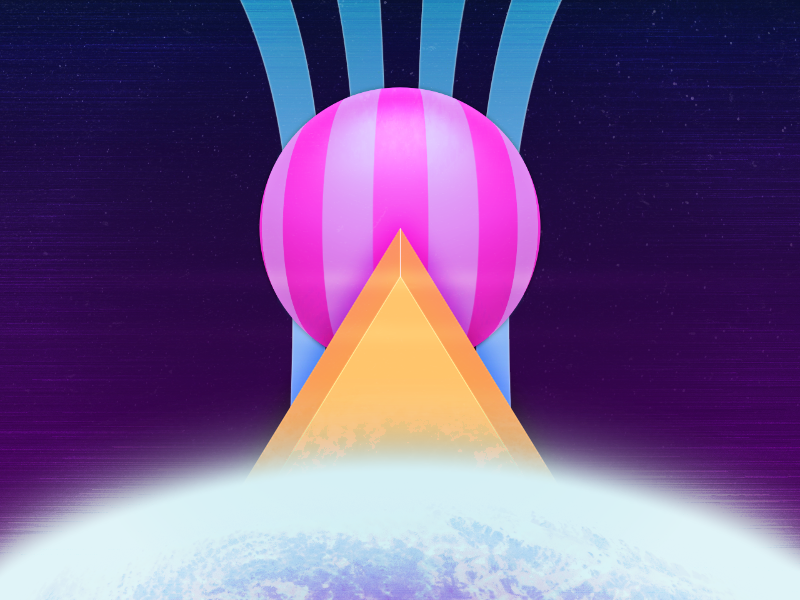Just minutes before it was set to deliver its financial results for the first half of its 2025-26 fiscal year, Ubisoft mashed the brakes on the whole thing, postponing the release of its results to an unspecified future date. The company also requested that European exchange Euronext halt trading of the company’s shares and bonds from November 14 until the publication of its results.
Ubisoft is a textbook example of what happens when you pin your companies revenue on a small handful of IPs and milk them to the absolute fucking limit. I like assassins creed, but I’ve played enough of them for the rest of my life. Make something new my dudes.
They have so many great IPs that are just gathering dust or in development hell, yet they keep milking the same few games every year.
Man, they have had some really good IP over the years and somehow managed to ruin all of it.
That’s what you get when you don’t want to pay people for their work and try to keep teams together. The newbies aren’t going to care about the rich history of the games they’re banging out code for at 3 AM on a Saturday.
The usual cycle. They get good, get big, get shit, get insolvent or bought up until there’s no bigger fish anymore (in which case you have to live with shit until they get insolvent after a long time).
This is good news for everyone who is not an ubisoft shareholder
how so?
Why? What relevance is Ubisofts poor record keeping to non-shareholders?
This is what happens when you abandon Splinter Cell.
It’s what happens when you operate your company with an accountant mentality. The focus is 100% on money, and 0% on creativity.
They always realize too late that customers won’t just give you money, you have to offer them something decent in exchange, but accountants don’t know how to do that, which is why you NEVER let accountant craft the business strategy for a company.
If they try to offer suggestions, you scream at them to get back to their hole and count the money like they’re supposed to, and when their opinion is needed, it will be solicited, which will be NEVER.
The irony is that they actually have some pretty unique and creative ideas spread out in most of their open-world games despite the jokes about how they’re all the same. If they cared about making good shit and not just money, they could have a game that rivals or surpasses Grand Theft Auto.
Or consistently fail to make Beyond Good and Evil 2 for several decades.
Most likely they fucked up their report and they’re using the rules of the exchange to suspend trading until they fix the mistake. But Ubisoft has been running on fumes for some time now, shitting out the same 3 or 4 games over and over again so I doubt their financials are that great.
Yikes bikes. Obviously the writing has been on the wall for a minute. But I didn’t realize it would happen in one minute.
For being too fat for their own good, tear the damn thing down.

get fucked.
Too late to short it I guess
Wait…you can just do that?
You… can…
But its… kind of a really bad move, from the perspective of anyone with money, involved in Ubisoft.
This is roughly the equivalent of an unannounced, sudden bank holiday, you know, right before everything over the FDIC insured 250k gets cleaned out.
Yes because stocks are a straight up scam. It should be able to swing up and down as the market demands, but it doesn’t because every time there’s a potentially life changing movement up or down they halt it. They’ve done it many, many times before.
You can do whatever you want there, as long as you are ok with the penalties.
I‘m looking forward to next year when AAA studios will continue to disappoint even harder while indie games flourish and gain market share. Maybe the AI bubble pops too. One can only hope.
Don’t forget AA, doing pretty good too.
Yup, AA and indie make up >90% of my gaming dollars and hours.
Then the AAA studios will use some of their Saudi cash to buy out the most prominent indie developers, only to slowly strangle their products
Isn’t this how the gaming boom and bust cycle always worked?
Indie(ish) games boom, AAA studios buy them and make them bust.
Not necessarily. Minecraft kinda went that way, but Factorio is still independent, and they were both released around the same time.
AAA games are often based on someone else’s IPs (e.g. Tom Clancy) or derived from a successful competitor (e.g. indie games). But I haven’t seen a ton of cases where the indie studio was bought outright.
On a pedestrian level, I’ve really liked the slow move from “SNES aesthetic” to “PS1/PS2 aesthetic”. My first console was an N64, so I guess I never had much nostalgia for the 8-bit days, and I feel like 3D gives a lot of opportunities for intelligent asset reuse to give a game lots of content.
I see the points that you made to another commenter but SNES and Sega Genesis were 16-bit consoles. They were a dramatic improvement (and many games on them were the pinnacle as far as I’m concerned) over the 8-bit NES and Sega Master System. I’ll take well-designed 16-bit games over pretty much anything else.
Genuine curiosity: does 3D really give more opportunities for asset reuse than 2D does?
Yes! For instance, say you’re making a character action game about big flashy jumping attacks. It took a long time to make the attack animations and now you need to provide the player with unlockables to encourage exploring, or some DLC.
If you have a 2D game, you’d need to do a LOT to integrate any new cosmetics, or characters, into your existing protagonist. But in 3D, if your character finds a hat, it’s very simple to just attach it to the model. Even swapping to a new playable character, you can retarget animations as long as proportions are similar.
I’m still not quite getting your point, sorry. Why would 3D make it easier to attach a hat to the character or retarget animations than 2D? That seems like a specific engine feature limitation and not inherently a shortcoming of 2D in general? It sounds like you’re comparing 3D to a primitive 2D engine where you need to manually draw and animate everything on screen instead of to a modern 2D engine with character bones, parenting, etc. Perhaps I’m actually out of the loop regarding the current limitations of 2D game engines and am thinking more in terms of a comparison between 3D and 2D animation software.
With 3d you make the model and it’s “naturally” 3d (obviously). If you want to make a 2d sprite have a different perspective, you need to animate (often times draw) it specifically. As they mentioned it before, it’s mostly useful for animations and movement. It may not even be “reusability” as much as “lack of need to think about perspective” or “scalability”.
Another point is that with a 3d engine under low-storage concerns (like say, the N64) you can do a lot of fuckery like having a total of ~10 textures and just apply various color tints (and maybe a blur here and there) to make it seem like there’s more. While 2d engines do support this nowadays, it’s still hard for artists to “fake” such a wide gamut of sprites, just by the nature of the medium. There’s no model to apply a texture to, so you’re limited to having a base sprite and recoloring it.
You could do a modular approach in 2d. For example, a character is built of the body (arms+face), hair, pants, shirt and shoes and change them individually. Same for houses with roofs, doors, windows and walls, etc.
However, as already said, you’re limited by perspective a lot. Each new perspective requires almost double the sprites.
With 3d you make the model and it’s “naturally” 3d (obviously). If you want to make a 2d sprite have a different perspective, you need to animate (often times draw) it specifically. As they mentioned it before, it’s mostly useful for animations and movement. It may not even be “reusability” as much as “lack of need to think about perspective” or “scalability”.
Oh, absolutely. I was thinking more in terms of 2D doing traditional flat 2D views like side-view platformers or top-down views. I can completely understand that as soon as you try to emulate 3D with even something as simple as an isometric view it’s going to be much more work than just doing straight 3D.
Another point is that with a 3d engine under low-storage concerns (like say, the N64) you can do a lot of fuckery like having a total of ~10 textures and just apply various color tints (and maybe a blur here and there) to make it seem like there’s more. While 2d engines do support this nowadays, it’s still hard for artists to “fake” such a wide gamut of sprites, just by the nature of the medium. There’s no model to apply a texture to, so you’re limited to having a base sprite and recoloring it.
I can understand this too.
You could do a modular approach in 2d. For example, a character is built of the body (arms+face), hair, pants, shirt and shoes and change them individually. Same for houses with roofs, doors, windows and walls, etc.
I imagine that a lot of 2D games use these kinds of techniques.
However, as already said, you’re limited by perspective a lot. Each new perspective requires almost double the sprites.
Got it, thanks!
It might be simple attachment if a character is using skeletal animation, eg Intrusion 2. That art style isn’t used often because the direct limb tweeting is often overly visible. Often, most character frames are hand drawn or at least prerendered.
In these hand drawn styles, a character’s head could appear to enter Z depth as part of the drawing (imagine a 6 frame animation of a character spinning a sword like a top). When that happens WHILE they’re also wearing an attached hat, the hat must rotate and adjust for the depth as well - which means new drawings, even if you’re able to specify the positions of the character’s head during each frame of the animation.
We could be talking past each other with bad descriptions that need visuals, though.
I appreciate your more detailed description. I think I get what you’re trying to explain. It just seems to me (at a very shallow level, I’m no expert) that all else being equal, 2D should be able to do just about anything that 3D can, but more simply (with some exceptions, of course - trying to reproduce a 3D look and behavior in 2D would obviously be an order of magnitude more work than just doing it in 3D).
To your point, I’ve generally noticed that bone-driven 2D animations tend to look kind of janky, like marionettes, but I didn’t think that it was a technical limitation as much as just the animators taking a lot more shortcuts. In other words, why would limb tweening be inherently more overly visible in 2D vs. 3D? It seems that it would be hard to do a pure comparison that controlled for other variables, but intuitively it seems to me that in a comparison that did control for those 2D would turn out easier to produce content for than 3D.
Again, to your point, I can understand that if we compared popular hand-drawn or pixel art 2D assets and environments with popular styles of 3D assets and environments in common usage, especially across indie games, 3D could very likely come out ahead in productivity.
Sorry if I have dragged this conversation out too long. I have an interest in game design/development and game art and hope to some day get into both myself with some small games, so this is a topic that I would very much like to have a solid understanding of so I can make the most efficient use of my time.
I suggest you play some classics.
Indie games pale in comparison.
What are some examples of classics and indies you have in mind?
Play Symphony of the Night instead of the indie knockoff.
The indie market is just another tool to reduce people’s standards.
Symphony was incredible for the time, but its difficulty was all over the place and pretty much becomes zero in late-game. Many, many Metroidvanias by indie developers have far surpassed SotN in quality.
It’s one of my favorite games of all time, but I understand that nostalgia plays a big part in that.
Both are great. Here are some great indies:
- Factorio
- Hollow Knight
- Subnautica
- Celeste
- Hades
- Tunic
That covers a wide range of genres, none are particularly derivative, and those are just off the top of my head.
I play great classics all the time, but I also play great new indies.
Yeah, I think all of those games are trash.
But I’m glad you like them.
Your standards are weird. Several of these games are considered the current pinnacle of their genres.
Right, Terraria and Stardew Valley constantly releasing new content for free is lowering standards… 🙄
So it sounds like you’re talking about knockoffs and not indies in general. Trying to make them equivalent ignores that the majority of game design innovation has come from indie games for many years.
No, I’m still talking about indies in general.
I gave 1 example because giving more isn’t worth my time.
the majority of game design innovation has come from indie games for many years.
Okay, buddy.
Saudi Arabia:

e-sports washing
Its not sports anymore. Its just media washing.
Comedy, games, whatever they can get their blood soaked hands on.
They know. They’re done, and that’s that.
There AAA games.
Then there’s one AAAA game.
Next must be the AAAAA game they’re working on. It’s an extraction shooter.
https://fr.wikipedia.org/wiki/Association_amicale_des_amateurs_d'andouillette_authentique
Sorry, the page doesn’t exist in English :(
Roguelike Deckbuilder Extraction Shooter.
AAAAA
The sound one makes when they’re forced to 100% Ubishit’s sandbox games.
What do you mean markers spread everywhere isn’t gameplay?
Then there’s one AAAA game.
I mean, they claim there’s one, but evidence says otherwise. Them spending a lot on their shitty arena shooter with boats didn’t make it any higher quality.
The only possible explanation is that they didn’t use enough AI.
To make the games, or to cook their books?
Yes.
You’re correct! They should have fired at least 20% more of their staff and used AI to build everything, and not test any of it. It’s the only way.















